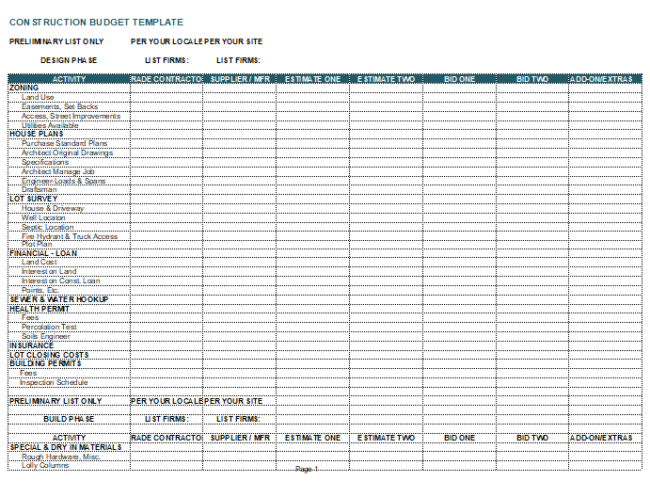
And even with a harness, the thought of lugging sheets of plywood and steel up there in the wind above our rocky ground was mildly terrifying. Our house plan looked so much smaller on paper, and once we saw our frame completed we realized that our 8/12 pitched roof was HUGE. There are certain things we hired out because we either lacked the equipment and expertise or in the case of our roof, we feared for our actual safety. Reduce your costs by keeping these hired jobs to a minimum.
#FREE OWNER BUILDER NEW HOME BUDGET SPREADSHEET PROFESSIONAL#
You don’t have to do every little task with your own two hands, and indeed there are times when hiring a professional is the right thing to do. Reduce the tasks you have to hire out.īuilding a house as an owner-builder isn’t all or nothing. Of all those tasks, the roofing killed us because we hired it out, which leads me to… 2. You stand to save even more if you’re doing a crawlspace, rubble trench, or pier foundation as opposed to a slab like we did. So in effect, the savings may have been negated in other areas. We may have also increased our cost in other areas like interior framing lumber, windows, doors, wiring, plumbing, and so on. ** On the other hand, we would have increased our cost of lime, sand, and sawdust for the cordwood walls.
room-in-attic trusses (cost to manufacture, deliver, and to hire out a guy with a crane to put them up)īy all of our best calculations, we figured we could have saved at least $12,000 if not more by building without a loft but with a slightly larger footprint. Why? Because when you have an upstairs you pay extra for: What we didn’t know was that the cost of concrete and excavation for a slightly larger slab foundation would have been way less expensive than spending money on an upstairs. For example, instead of a longer, skinnier 20’x70′ or 20’x80′ home (1400-1600 ft2), we did more squarish 30×34 with room-in-attic trusses (1020 ft2 on the bottom with a roughly 400 ft2 loft over the back half of the house). So instead of trying to find a one-floor passive solar plan we liked (which was way harder than we thought) we found a plan for a smaller foundation size with a loft. We thought we would save money on excavation and concrete, and need less cordwood overall for our walls by building a smaller footprint and doing an upstairs with room-in-attic trusses. This is one of those things that can vary by area and availability so ask around. A larger “footprint” can POTENTIALLY save thousands over having an upstairs. 10 Ways To Save Thousands of Dollars Building Your Own Home 1. Here are 10 things you can do to design and build your own home without breaking the bank. That’s why we’ve made it our mission to share everything we’ve learned so that you can successfully build your own home. There is so much that goes into building your own home and I know that you want to savor that building experience for yourself. I’m talking about design choices, location, and more. I don’t just mean finding materials for cheap or free, though that has been a HUGE money saver. There are a lot of things we’ve learned along the way about ways to reduce your building costs. Over the past three years, we have gone through the entire process of designing and building our own cordwood home. If you are looking to be an owner-builder for your new home AND you want to do the majority of the work yourself, we’re right there with you. I only recommend products and services I trust to serve you. 
Disclosure: I sometimes earn products or commissions from affiliate links or partnerships on my blog.





 0 kommentar(er)
0 kommentar(er)
